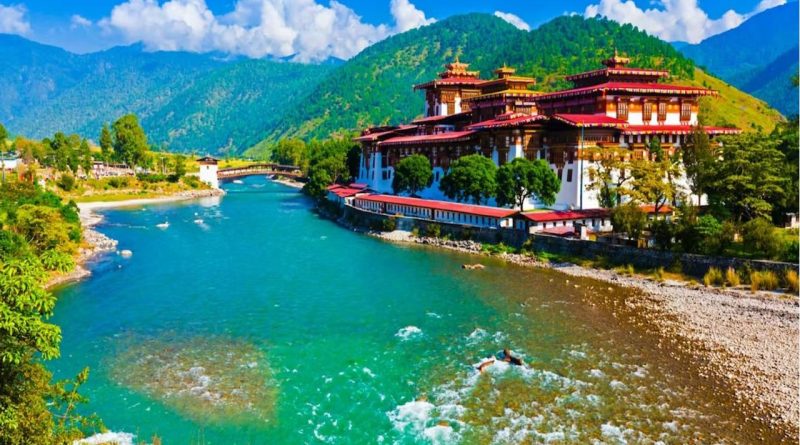BHUTAN – The best season to visit Bhutan is in spring and autumn
|
Bhutan is a landlocked mountain kingdom, roughly the size of Switzerland’in the eastern Himalayas. The modem name for the country is derived from the Sanskrit word ‘Bhu-Uttan’ (‘High Land’). The Bhutanese, however, have always know it is”Druk Yul”. The indigenous people are “Drukpas” and the school of Buddhism they adhere to is the “Drukpa Kagyud”. Bhutan is the last unspoilt Himalayan kingdoand the only nation in the world to profess Tantric Buddhism as its state religion. |
|||||||||||||||||||||||||||||||||||||||||||||||||||||||
|
Bhutan has never been colonized; and although recorded history first mentions the country in the 7th century, its independence was recognized even before that. In the 8th century, the great Tantric mystic Guru Padmasambhava (more popularly known as Guru Rimpoche in Bhutan) came to Bhutan from Swat, in present-day Pakistan, and spread the Buddhist faith through the land, planting the seeds of the culture that flourishes today. Temples and monasteries dating from the 8th century still stand as hallowed places in contemporary Bhutan. The next defining event in Bhutan’s history was the arrival of Ngawang Namgyel, the “Shabdrung” (literally, “at whose feet one submits”) in 1616. The Shabdrung ·was the father and unifier of medieval Bhutan.After repelling numerous Tibetan invasions, the Shabdrung subdued the many warring feudal overlords and brought all of Bhutan under the influence of the Drukpa Kagyud School. His 35 year reign also saw the establishment of a nationwide administration,aspects of which still endure, and the building of dzongs as easily defensible fortresses and seats of local government. In fact, many of the dzongs you see today were built during the Shabdrung’ s reign. |
|||||||||||||||||||||||||||||||||||||||||||||||||||||||
|
The most recent watershed in Bhutan’s history was the coming to power of Ugyen Wangchuk, first hereditary monarch of Bhutan: Like the great Shabdrung, Ugyen Wangchuk pacified the feuding Regional Governors who had plunged Bhutan into a state of almost perpetual civil war. Having consolidated his authority across the entire country by 1885, he played the key mediatory role between the British and the Chinese. Finally, on December 17 (Bhutan’s National Day) 1907, Ugyen Wangchuck was unanimously elected by all the Regional Governors and the Central Monastic Body, at the Punakha Dzong and, crowned “Druk Gyalpo” (“Precious Ruler of the Dragon People”). |
|||||||||||||||||||||||||||||||||||||||||||||||||||||||
| The present King, fourth hereditary monarch, is Druk Gyalpo Jigme Singye Wangchuk, upon whose coronation in 1974 Bhutan opened its doors to tourists.While tourism in Bhutan has come a long way since then, it has always been guided by the desire to preserve Bhutan’s unique heritage and spectacular natural beauty.Visitors can thus still encounter a vibrant culture in an unspoilt environment. | |||||||||||||||||||||||||||||||||||||||||||||||||||||||
| COUNTRY PROFILE | |||||||||||||||||||||||||||||||||||||||||||||||||||||||
|
|||||||||||||||||||||||||||||||||||||||||||||||||||||||
| The best season to visit Bhutan is in spring and autumn | |||||||||||||||||||||||||||||||||||||||||||||||||||||||

